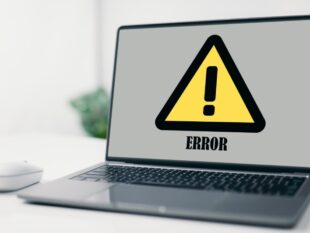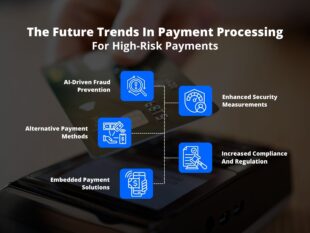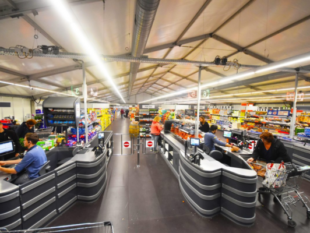How Retail QA Testing Prevents Checkout Nightmares & Lost Sales
by Soumava Goswami Retail 12 February 2025

Picture this: You spend 20 minutes browsing your online store, picking out the perfect products, and heading to checkout. Now, you meet with an error message.
❌Maybe your payment won’t go through.
❌ Maybe the page has frozen.
❌ Or, maybe their discount code won’t apply.
You will be frustrated and leave the transaction, and this is a classic example of how you lose a sale.
Now, multiply that by hundreds or even thousands of potential customers. That’s what happens when retail QA testing is neglected.
Retail QA testing is not just about fixing bugs. Quality assurance (QA) testing ensures that every step of the shopping journey works right, with a special focus on the most critical part, checkout.
On the other hand, without QA testing, you are not taking care of customer satisfaction, impacting sales figures and damaging your brand’s reputation.
So, are you ready to protect your business from checkout disasters? This Real Wealth Business Guide will be of great help.
Retail QA Testing | How It Helps To Ensure Customer Satisfaction And Prevent Sales Loss

Retail QA testing is important to maintain the digital infrastructure of a business. Certain software and applications keep the infrastructure functioning. QA testing assesses and validates those software and applications.
| Some Important Systems Assessed And Validated By Retail QA Testing • Point of Sale (POS) systems • E-commerce platforms • CRM or Customer Relationship Management System • Inventory Management |
The primary objectives of retail QA testing are preventing sales loss and ensuring customer satisfaction. But how does QA testing help achieve these goals? Let’s delve deeper.
1. Retail QA Testing Catches Hidden Bugs Before Customers Do
Issues like slow-loading pages, incorrect tax calculations, or broken coupon codes can drive customers away. The problem? Many of these errors don’t show up during basic testing or internal use.
That’s where comprehensive retail QA testing comes in, as it goes beyond surface-level checks to identify deep-rooted issues that could disrupt the checkout process.
Through automated and manual testing, QA teams simulate real-world shopping experiences, catching anything that could go wrong before customers encounter it. This includes:
- Payment Processing Errors – Testing different payment methods (credit cards, PayPal, digital wallets) to ensure every transaction goes through smoothly.
- Cart & Checkout Functionality – Verifying that items are correctly added, removed, and saved, preventing abandoned carts due to frustration.
- Promo Code & Discount Failures – Ensuring that discounts apply correctly, avoiding disappointed customers at checkout.
- Site Speed & Performance – Checking how well the site handles heavy traffic, especially during sales or holiday rushes.
- Cross-Device Compatibility – Making sure the checkout process works on all devices and browsers, so no customer is excluded.
2. Retail QA Testing Prevents Payment Failures & Fraud Risks
A glitch in payment processing costs you sales and makes customers question your viability as a business. In this age of cyber crimes, they may take it as an indication of fraudulence.
Retail QA testing software ensures that payment gateways work correctly across different platforms. It also plays a crucial role in fraud detection.
Moreover, by running security tests, QA teams help prevent vulnerabilities that hackers could exploit, keeping customer data safe and minimizing chargebacks.
3. Helps You Avoid Costly Compliance Mistakes
Retailers, especially those operating internationally, have to comply with various legal and financial regulations. From GDPR (for European customers) to PCI DSS (for secure credit card transactions), failing to meet these standards can result in hefty fines and legal trouble.
QA testing makes sure your checkout process meets all necessary compliance requirements. This means verifying the following.
- Data encryption is in place to protect customer information.
- Tax calculations are accurate based on customer location.
- Refund and return policies function as intended.
Ignoring these factors risks financial penalties and weakens customer trust.
4. Enhances Overall Shopping Experience
Checkout isn’t just about processing payments—it’s the final step of a customer’s journey. A smooth, intuitive experience encourages repeat purchases, while a frustrating one leads to cart abandonment.
QA testing helps refine every element of checkout, ensuring:
- A clean, distraction-free design that keeps customers focused.
- A guest checkout option for those who don’t want to create an account.
- Clear error messages that guide users instead of confusing them.
- Fast-loading pages that don’t slow customers down.
When done right, testing doesn’t just prevent problems—it actively improves conversion rates.
5. Reliable QA Testing Keeps Sales Flowing
Retail success isn’t just about attracting customers. It’s about keeping them. A broken checkout process drives people away, while a flawless one turns shoppers into repeat buyers. By investing in thorough QA testing, you’re not just preventing lost sales.
You are also creating a seamless shopping experience that builds long-term loyalty.
If you want to keep checkout nightmares at bay, QA testing isn’t optional—it’s essential.
The Cost Of Skipping QA Testing
Some retailers assume QA testing is an extra expense rather than a necessity. However, skipping it can lead to far greater financial losses than investing in regular testing. Lost sales, abandoned carts, negative reviews, and chargebacks all add up.
More than that, once customers lose faith in your checkout process, it’s tough to win them back. A single bad experience can send them straight to a competitor.
Moreover, skipping retail QA testing can cause legal problems. So, on the one hand, you lose the revenue. On the other hand, you lose the customer trust and make the future of your business uncertain with legal and compliance issues.
Fitting Retail QA Testing Into Your Business Landscape | Know The Challenges
Retail QA testing needs to be extensive, and it has to be end-to-end to make the diverse software and application ecosystem work in a business. Manual testing fails to cover the challenges in every customer journey.
However, automation also has its share of challenges, including complexities in tool building, integrating them into existing business systems, and maintaining them.
The trick is to seek help from a professional who comes up with a simplified tool for testing. It is crucial to handle the complexity of the business system with better access and effectiveness.
Moreover, a comprehensive test plan always helps. With the plan, you have a clear idea about the end-to-end scenarios in a customer journey. So, you expect better consistency while integrating the retail QA testing software into your business system.
Read Also:



































































































